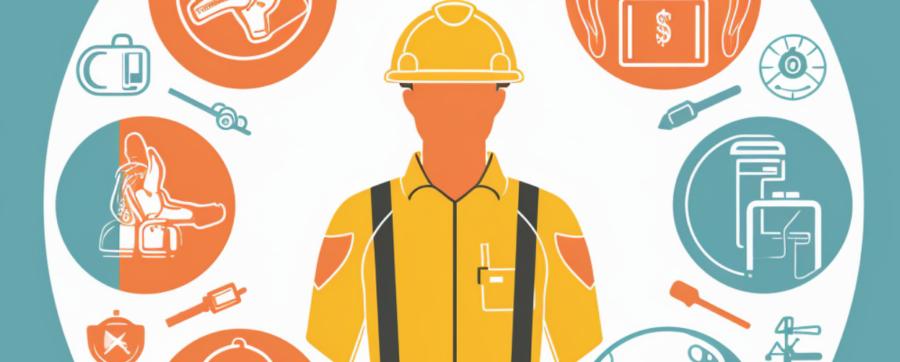An Engaging Discourse on Occupational Health and Safety

Lo! A New World of Hitherto Unexplored Hazards
As we trudge through the morass of our working lives, we may sometimes find ourselves pondering the hallowed topic of occupational health and safety. In our daily toils, we are surrounded by perils both great and small, and it behooves us to consider the myriad ways these threats may be defused or, at the very least, mitigated.Occupational health and safety is a matter that concerns each and every one of us, regardless of the nature of our employment. Whether we are ensconced in the sterile environs of a gleaming office tower or grappling with the elements in the dusty heat of a construction site, we are all at risk of being brought low by untoward events.
The Ineluctable Lure of Statistics
Before delving further into the matter, allow me to regale you with some statistical tidbits that shed light on the scope of the issue. According to the International Labour Organization, around 2.3 million workers succumb to work-related accidents or diseases each year, while an estimated 160 million people suffer from work-related illnesses. This adds up to a loss of roughly 4% of the global gross domestic product, or a staggering $2.8 trillion, in direct and indirect costs of injuries and diseases.At this juncture, you may well be wondering what can be done to staunch the flow of blood and treasure. Fear not, for I shall now attempt to elucidate some steps that can be taken to ensure a safer and healthier workplace.
Put Your Trust in the Power of Prevention
The key to reducing workplace accidents and diseases is to embrace the axiom that prevention is better than cure. By identifying the hazards present in a workplace and taking steps to counteract them, we can greatly reduce the potential for harm.- Risk assessment: The first step in any prevention strategy is to evaluate the risks associated with a particular work environment. This involves identifying hazards, determining who might be harmed and how, and evaluating the adequacy of existing control measures.
- Control measures: Once hazards have been identified, appropriate control measures must be implemented. These may range from physical barriers to prevent contact with dangerous substances, to administrative controls such as job rotation to reduce exposure to repetitive strain injuries.
- Training and communication: All employees should be educated about the risks present in their workplace and trained in the correct procedures for dealing with them. Furthermore, a culture of open communication should be fostered, whereby workers feel comfortable discussing health and safety concerns with their supervisors.
- Maintenance and inspection: Regular inspections of equipment and facilities are crucial to ensuring their continued safe operation. Maintenance schedules should be adhered to assiduously, and any defects should be promptly rectified.
The Dawning Age of Technological Salvation
As we hurtle headlong into the giddy whirl of the twenty-first century, we find ourselves confronted with a dazzling array of technological marvels that promise to revolutionize the field of occupational health and safety. From wearable devices that monitor workers" vital signs to automated systems that alert supervisors to potential hazards, the possibilities are virtually limitless.One particularly salient innovation is the burgeoning field of telemedicine, which enables remote diagnosis and treatment of illnesses and injuries. By harnessing the power of telecommunication technologies, healthcare professionals can provide advice and assistance to workers in far-flung locations, thereby reducing the need for costly and time-consuming travel.
Cast Thine Eyes to the Horizon
As we contemplate the future of occupational health and safety, it is vital that we remain abreast of emerging trends and developments. For example, the rise of the gig economy and the proliferation of remote working arrangements pose new challenges for the management of worker wellbeing. Similarly, the advent of advanced robotics and artificial intelligence technologies may expose us to hitherto unimagined hazards.In conclusion, dear toiler in the vineyards of industry, it is incumbent upon each of us to do our part in promoting a safe and healthy working environment. By remaining vigilant to the dangers that lurk in our workplaces, and by embracing the myriad tools and techniques at our disposal, we can strive to create a world in which the specter of occupational health and safety is banished to the hinterlands of irrelevance.
Article kindly provided by healthyvoices.net
Latest Articles
- Rethinking Early Intervention Strategies for Childhood Behavior Support
- Keep Going: The Brain Science of Turning Setbacks Into Momentum
- Designing Movement Routines That Don't Feel Like Exercise
- Chair Yoga Works Wonders For Bodies Of All Ages
- Eyebrows Through the Ages and What They Reveal About Our Faces
- Feeding Plans That Keep Every Pet in Balance
- Hidden Immune Boost Hiding in Plain Sight for Corporate Travellers
- Evening Quiet Isn't Automatic and That's Perfectly Normal
- Quiet Power Makes a Salon Feel Like a VIP Retreat
- Chewing as Meditation and Everyday Calm
- Sleep Deprivation as a Social Problem, Not a Personal Failure
- Why Recovery Rituals Outlast Resolutions and Keep Us Moving Forward
- Desk Job Survival with a Side of Shoulder Rolls
- Why Your Living Room Layout Might Be Causing Your Back Pain
- Why Your Teeth Love Dental Hygienists
- The Hidden Life Skills Buried in Your Workout Schedule
- Why Doing Nothing Might Just Fix Everything
- Jaw to the World: Why Your TMJ Deserves More Respect
- Ink Your Way to Stronger Immunity
- Integrating EFT into Corporate Wellness Programs for a Happier, Healthier Workforce
- Nutrition and Dietetics
- Exercise and Fitness
- Meditation and Yoga
- Mental Health
- Women's Health
- Men's Health
- Children's Health
- Senior Health
- Heart Health
- Sleep Health
- Skin Health
- Eye Health
- Dental Health
- Pain Management
- Addiction and Recovery
- Sexual and Reproductive Health
- Alternative Medicine
- Chronic Conditions
- Weight Management
- Occupational Health and Safety
- Public Health
- General Health Tips
- Beauty

